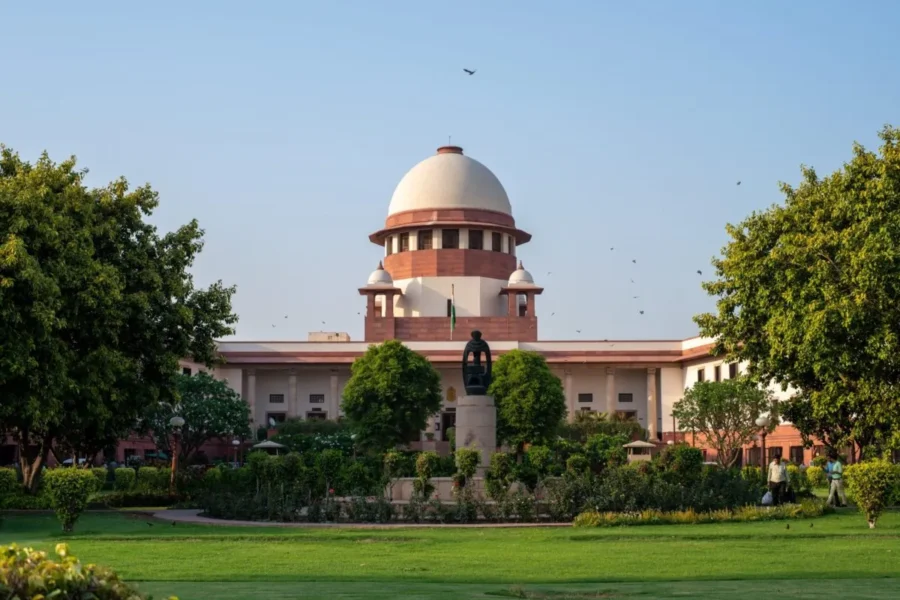Introduction:
Welcome to the official blog of the Law Offices of Kr. Vivek Tanwar Advocate and Associates, where we are dedicated to providing litigation support services for matters related to the Convincing Evidence in Section 149 IPC Cases under IPC. In today’s blog post, we aim to shed light on the prevailing issues surrounding the IPC, the legal framework for their protection, and the steps we can take as a society to combat these acts. Join us as we explore this critical subject and empower you with the knowledge to protect your rights and safety.
In a recent legal development, the Supreme Court of India highlighted the significance of presenting convincing evidence when establishing the common object in cases related to Section 149 of the Indian Penal Code, 1860 (IPC). This ruling came in the matter of Naresh @ Nehru v. State of Haryana, which revolved around a shocking incident involving a gunshot and a subsequent murder. In this article, we delve into the background of the case, the court’s observations, and the legal nuances surrounding unlawful assembly and common objects.
Why in the News?
The Supreme Court (SC), underscored the significance of requiring convincing evidence for establishing the common object in cases pertaining to Section 149 of the Indian Penal Code, 1860 (IPC) in the matter of Naresh @ Nehru v. State of Haryana.
Background of the Naresh @ Nehru v. State of Haryana Case
The case involved a tragic incident where a gunshot was fired at a boy, leading to his death. The incident unfolded as follows:
- Eyewitness Testimony: A statement from Mohit Kala, an eyewitness, provided crucial details about the incident. He revealed that he saw two individuals, Ajay and Suraj, running towards a house, being chased by three young men on a bullet motorcycle. Two more motorcycles, each with two riders wielding batons, were following the lead motorcycle driven by Ravi.
- The Fatal Shot: The individual on the bullet motorcycle dismounted and fired a country-made revolver at Ajay, fatally hitting him in the head. The assailants fled the scene on their motorcycles after the attack.
- Background Conflict: The victim, Ajay, had a history of conflict with the alleged perpetrator, Ravi, who was his junior in school. Ravi had been bullying and threatening Ajay, leading to a confrontation between them.
- Legal Action: The incident led to the filing of a First Information Report (FIR) under Sections 148, 149, 307 of IPC, and Section 25 of the Arms Act, 1959. After Ajay’s death, the charge under Section 307 of IPC was converted to Section 302.
- Judicial Proceedings: The Session Court convicted the accused individuals, a decision upheld by the High Court. Subsequently, the case was appealed to the Supreme Court.
Court’s Observations
The Supreme Court based its decision on relevant case laws, notably:
- Roy Fernandes v. State of Goa (2012): In this case, the court emphasized that for a person to be convicted as a participant in an unlawful assembly, they must have been aware that the murder of the deceased was a probable outcome in pursuit of the common objective.
- Lalji v. State of UP (1989): This case highlighted that the common object of an unlawful assembly can be deduced from the nature of the assembly, the weapons used, and the behavior of the assembly before or during the incident.
In their ruling, Justices S. Ravindra Bhat and Aravind Kumar stressed that to convict a person under Section 149 of the IPC, the prosecution must establish that the appellants shared a common object as part of an unlawful assembly and were aware of the likely offenses committed to achieve that object.
Understanding Unlawful Assembly and Common Object
Unlawful Assembly is defined under Section 141 of IPC and includes various scenarios where individuals gather with a common object, such as overawing the government, resisting the execution of laws, committing mischief, or using force to obtain property or enforce rights.
Common Object, as defined in Section 149 of the IPC, represents the shared purpose of an unlawful assembly. Every member of such an assembly is held liable for offenses committed in pursuit of that common object. This concept is based on the principle of vicarious liability, meaning individuals can be held responsible for the actions of others within the unlawful assembly.
Conclusion
The Naresh @ Nehru v. State of Haryana case serves as a reminder of the importance of presenting compelling evidence when establishing the common object in cases related to Section 149 of the IPC. It underscores the need for a clear link between the accused’s actions, the shared purpose of the unlawful assembly, and their awareness of the likely offenses committed to achieve that purpose. The ruling clarifies the legal intricacies surrounding unlawful assembly and common objects in the Indian legal system.
We are a law firm in the name and style of Law Offices of Kr. Vivek Tanwar Advocate and Associates at Gurugram and Rewari. We are providing litigation support services for matters related to the IPC.

